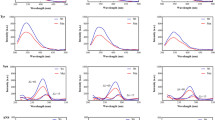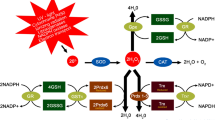Abstract
We have previously demonstrated that the reaction of a physiological dicarbonyl, methylglyoxal (MGO) enhances the chaperone function of human αA-crystallin. MGO can react with cysteine, arginine, and lysine residues in proteins. Although the role of arginine and lysine residues in the enhancement of chaperone function has been investigated, the role of cysteine residues is yet to be determined. In this study, we have investigated the effect of MGO modification on the structure and chaperone function of αA-crystallin mutant proteins in which C131 and C142 were replaced either individually or simultaneously with isoleucine. MGO-modification resulted in improved chaperone function in all three αA-crystallin mutants, including the cysteine-free double mutant. The enhanced chaperone function was due to increased surface hydrophobicity and increased binding of client proteins. These results suggest that the two cysteine residues, even though they could be modified, do not take part in the MGO-induced improvement in the chaperone function of human αA-crystallin.





Similar content being viewed by others
References
Augusteyn RC (2004) Alpha-crystallin: a review of its structure and function. Clin Exp Optom 87:356–366
Boyle DL, Takemoto L, Brady JP, Wawrousek EF (2003) Morphological characterization of the alpha A- and alpha B-crystallin double knockout mouse lens. BMC Ophthalmol 3:3
Brady JP, Garland D, Duglas-Tabor Y, Robison WG Jr, Groome A, Wawrousek EF (1997) Targeted disruption of the mouse alpha A-crystallin gene induces cataract and cytoplasmic inclusion bodies containing the small heat shock protein alpha B-crystallin. Proc Natl Acad Sci USA 94:884–889
Hsu CD, Kymes S, Petrash JM (2006) A transgenic mouse model for human autosomal dominant cataract. Invest Ophthalmol Vis Sci 47:2036–2044
Xi JH, Bai F, Gross J, Townsend RR, Menko AS, Andley UP (2008) Mechanism of small heat shock protein function in vivo: a knock-in mouse model demonstrates that the R49C mutation in alpha A-crystallin enhances protein insolubility and cell death. J Biol Chem 283:5801–5814
Haik GM Jr, Lo TW, Thornalley PJ (1994) Methylglyoxal concentration and glyoxalase activities in the human lens. Exp Eye Res 59:497–500
Chellan P, Nagaraj RH (1999) Protein crosslinking by the Maillard reaction: dicarbonyl-derived imidazolium crosslinks in aging and diabetes. Arch Biochem Biophys 368:98–104
Padayatti PS, Ng AS, Uchida K, Glomb MA, Nagaraj RH (2001) Argpyrimidine, a blue fluorophore in human lens proteins: high levels in brunescent cataractous lenses. Invest Ophthalmol Vis Sci 42:1299–1304
Ahmed N, Thornalley PJ, Dawczynski J, Franke S, Strobel J, Stein G, Haik GM (2003) Methylglyoxal-derived hydroimidazolone advanced glycation end-products of human lens proteins. Invest Ophthalmol Vis Sci 44:5287–5292
Biemel KM, Friedl DA, Lederer MO (2002) Identification and quantification of Major Maillard cross-links in human serum albumin and lens protein. Evidence for glucosepane as the dominant compound. J Biol Chem 277:24907–24915
Lo TW, Westwood ME, McLellan AC, Selwood T, Thornalley PJ (1994) Binding and modification of proteins by methylglyoxal under physiological conditions. A kinetic and mechanistic study with N alpha-acetylarginine, N alpha-acetylcysteine, and N alpha-acetyllysine, and bovine serum albumin. J Biol Chem 269:32299–32305
Nagaraj RH, Oya-Ito T, Padayatti PS, Kumar R, Mehta S, West K, Levison B, Sun J, Crabb JW, Padival AK (2003) Enhancement of chaperone function of alpha-crystallin by methylglyoxal modification. Biochemistry 42:10746–10755
Biswas A, Miller A, Oya-Ito T, Santhoshkumar P, Bhat M, Nagaraj RH (2006) Effect of site-directed mutagenesis of methylglyoxal-modifiable arginine residues on the structure and chaperone function of human alphaA-crystallin. Biochemistry 45:4569–4577
Biswas A, Lewis S, Wang B, Miyagi M, Santoshkumar P, Gangadhariah MH, Nagaraj RH (2008) Chemical modulation of the chaperone function of human αA-crystallin. J Biochem 144:21–32
Chen SJ, Sun TX, Akhtar NJ, Liang JJ (2001) Oxidation of human lens recombinant alphaA-crystallin and cysteine-deficient mutants. J Mol Biol 305:969–976
Liang JN, Pelletier MR (1987) Spectroscopic studies on the mixed disulfide formation of lens crystallin with glutathione. Exp Eye Res 45:197–206
Reddy GB, Kumar PA, Kumar MS (2006) Chaperone-like activity and hydrophobicity of alpha-crystallin. IUBMB Life 58:632–641
Biswas A, Wang B, Miyagi M, Nagaraj RH (2008) Effect of methylglyoxal modification on stress-induced aggregation of client proteins and their chaperoning by human alphaA-crystallin. Biochem J 409:771–777
Takemoto L (1996) Increase in the intramolecular disulfide bonding of alpha-A crystallin during aging of the human lens. Exp Eye Res 63:585–590
Lou MF (2000) Thiol regulation in the lens. J Ocul Pharmacol Ther 16:137–148
Acknowledgements
This study was supported by NIH grants R01EY-016219 and R01EY-09912, Carl F. Asseff, M.D. Professorship (RHN), P30EY-11373 (Visual Sciences Research Center of CWRU), Research to Prevent Blindness, NY, and the Ohio Lions Eye Research Foundation. We thank Dr. Ashis Biswas for helpful discussions.
Author information
Authors and Affiliations
Corresponding author
Rights and permissions
About this article
Cite this article
Kanade, S.R., Pasupuleti, N. & Nagaraj, R.H. Role of cysteine residues in the enhancement of chaperone function in methylglyoxal-modified human αA-crystallin. Mol Cell Biochem 322, 185–191 (2009). https://doi.org/10.1007/s11010-008-9956-5
Received:
Accepted:
Published:
Issue Date:
DOI: https://doi.org/10.1007/s11010-008-9956-5




